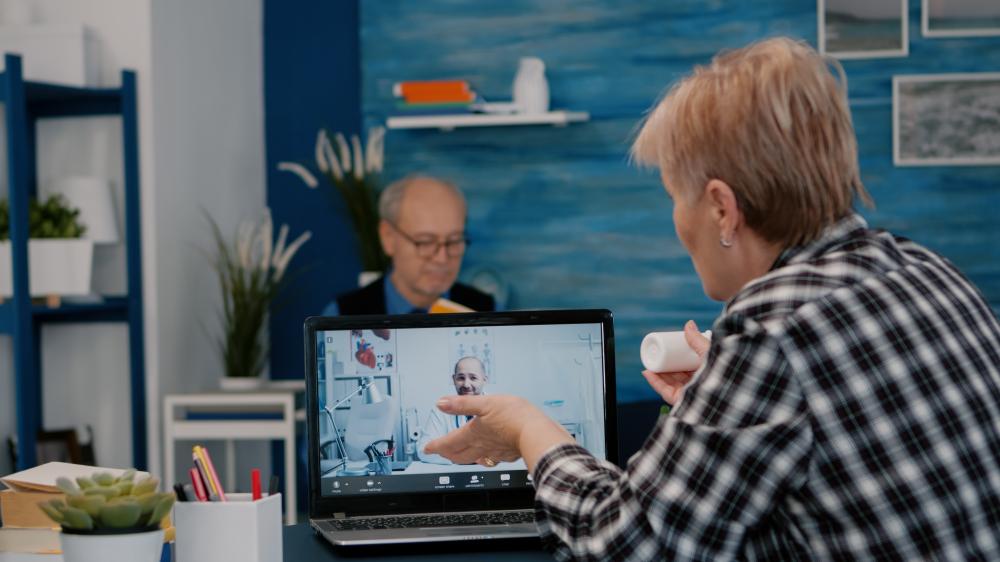
Exploring Telehealth Treatment
The landscape of healthcare has seen a transformative shift with the advent of telehealth, revolutionizing the way we access medical services. Telehealth Treatment provides an innovative solution, allowing patients to receive quality care from the comfort of their own homes. This advancement is particularly beneficial for individuals with mobility issues or those residing in remote areas. Telehealth Treatment utilizes various digital communication tools to analyze, diagnose, and monitor patients effectively.
Who Benefits from Telehealth Treatment?
Telehealth Treatment caters to a wide demographic, offering versatile solutions for a myriad of health challenges. Patients dealing with chronic conditions such as diabetes or hypertension greatly benefit by having regular check-ins without the need for frequent travel. Moreover, mental health services delivered through Telehealth Treatment provide an accessible avenue for therapy sessions, making mental healthcare more approachable than ever. The convenience of virtual consultations breaks down barriers to accessing necessary medical care.
How to Get Started
Embarking on a journey with Telehealth Treatment can be streamlined with the right approach. Here’s a step-by-step guide to help you begin:
- Research and select a healthcare provider offering telehealth services.
- Schedule a virtual consultation through their online platform or via phone.
- Ensure you have a stable internet connection and a device capable of video calls.
- Prepare a list of questions or concerns you want to address during the session.
- Engage in the consultation from a quiet, private space.
- Follow any post-consultation instructions or prescriptions provided by your healthcare provider.
This process facilitates seamless interaction between patient and provider, ensuring optimal care through Telehealth Treatment.
What Qualifies as a Telehealth Treatment Emergency?
A Telehealth Treatment emergency typically involves situations where immediate medical advice is crucial but not life-threatening. Conditions like severe allergic reactions, minor injuries, or sudden symptoms of chronic illnesses can be addressed through telehealth consultations. However, in cases posing an immediate threat to life, seeking urgent in-person medical attention is paramount.
While Telehealth Treatment offers substantial benefits, it’s essential to distinguish between emergencies necessitating virtual consultation versus those requiring emergency room visits.
The Future of Telehealth Treatment
The future of Telehealth Treatment is poised for continuous innovation and integration into mainstream healthcare. The ongoing development of advanced monitoring technologies, like wearable devices and AI diagnostics, will further enhance patient care. As these technologies evolve, they promise to deliver personalized healthcare experiences tailored to individual needs. Moreover, the expansion of telehealth into specialties like dermatology and physical therapy signifies a broader scope for this digital healthcare modality.
- Increased access to specialists regardless of geographical limitations
- Cost-effective healthcare solutions reducing overall medical expenses
- Growing emphasis on preventive care through regular telehealth check-ins
With healthcare systems embracing digital solutions, Telehealth Treatment stands at the forefront of transforming patient-centered care.
What is Telehealth Treatment and How Does it Benefit Patients?
Telehealth Treatment refers to the use of digital communication technologies to provide healthcare services remotely. This mode of treatment has transformed access to medical care, especially in areas where healthcare facilities may not be easily accessible. It benefits patients by allowing them to connect with healthcare providers from the comfort of their own homes, reducing the need for travel, which can be particularly helpful for those with limited mobility or residing in remote locations.
For example, imagine a patient living in a rural area who needs regular check-ins to manage a chronic condition like diabetes. With telehealth, they can have these consultations virtually, saving time and travel expenses while still receiving effective care. Additionally, telehealth has been a game-changer for mental health services, making therapy and counseling more accessible and less intimidating for many.
Have you considered how telehealth could fit into your own healthcare routine, or are there any barriers you currently face that telehealth might help overcome?
Who Benefits Most from Telehealth Treatment?
While telehealth can be beneficial for nearly everyone, certain groups of people gain significant advantages from this approach. Individuals with chronic illnesses, such as hypertension or diabetes, find regular monitoring much easier through virtual consultations. Similarly, mental health patients can access therapy sessions with greater flexibility, which can be crucial in maintaining consistent care.
For example, a busy professional struggling with anxiety might find it difficult to schedule in-person therapy sessions. Telehealth allows them to have their therapy sessions during a lunch break or from the privacy of their office, helping them manage their mental health without disrupting their work schedule.
In your experience, have you seen telehealth improve accessibility to healthcare, or do you think there are areas that still need improvement?
What are Some Common Misconceptions About Telehealth Treatment?
A common misconception about telehealth is that it is only suitable for minor illnesses or straightforward consultations. However, telehealth encompasses a wide range of medical services, including managing chronic diseases and providing specialist consultations. Another misconception is that telehealth compromises the quality of care, whereas studies have shown that telehealth can deliver care quality comparable to in-person visits for many conditions.
Consider a scenario where someone believes that telehealth cannot effectively diagnose skin conditions. In reality, many dermatologists offer teledermatology, where high-resolution images sent via telehealth platforms can facilitate accurate diagnoses and treatment plans.
What other misconceptions have you encountered about telehealth, and how might they be addressed to improve understanding and trust in telehealth services?
How Can Patients Effectively Start with Telehealth Treatment?
Starting with telehealth treatment involves a few key steps. First, research and choose a healthcare provider that offers telehealth services and aligns with your specific health needs. Next, ensure you have the necessary technology, such as a device capable of video calls and a stable internet connection. Before your appointment, prepare a list of questions or issues you want to discuss to make the most of your consultation.
Imagine you’re about to have your first telehealth visit for a mental health consultation. Setting up in a quiet, private space where you feel comfortable can significantly enhance your experience and ensure a productive session. Don’t forget to check your device setup well ahead of time to avoid technical issues during your appointment.
Have you prepared for any upcoming telehealth appointments, and what steps are you taking to ensure a successful session?
When Should a Telehealth Treatment Emergency Be Considered?
A telehealth treatment emergency generally involves situations where you need immediate medical advice for non-life-threatening conditions. For instance, severe allergic reactions or sudden exacerbations of chronic illnesses may be addressed through telehealth, providing timely support and guidance.
However, if you’re experiencing a life-threatening condition, such as chest pain indicative of a potential heart attack or severe trauma, it’s critical to seek emergency in-person care immediately. A practical approach is to understand your symptoms and the level of care they necessitate, consulting with telehealth services when appropriate.
How do you decide when to opt for telehealth versus in-person care, and have you had any experiences that have shaped your understanding of these options?
What Does the Future Hold for Telehealth Treatment?
The future of telehealth treatment is vibrant, with continuous innovation anticipated. As technologies such as AI and wearable health devices advance, they promise personalized healthcare experiences like never before. This evolution is especially exciting for specialties like dermatology and physical therapy, where telehealth is expanding rapidly.
Imagine a world where you’re wearing a smart device that monitors your heart health in real-time, sending data directly to your healthcare provider. This type of development allows for preventive care through regular monitoring, potentially catching issues before they require significant intervention. The integration of telehealth into mainstream care is expected to grow, increasing access and reducing costs.
What technological advancements in telehealth are you most excited about, and how do you envision these impacting the future of healthcare?
How Does Telehealth Treatment Integrate into Mental Health Care?
Telehealth has profoundly impacted mental health care by removing traditional barriers to accessing therapy and counseling. Through telehealth platforms, patients can engage in therapy sessions from any location, providing the flexibility needed for those with busy schedules or who may feel anxious attending in-person appointments.
Consider a young adult dealing with depression who finds it intimidating to meet a therapist face-to-face. Telehealth enables this individual to begin therapy in a familiar, safe environment, lowering the entry threshold and encouraging regular participation. Furthermore, telehealth allows mental health professionals to reach a broader audience, particularly in underserved areas.
What have been your observations about telehealth’s effectiveness in mental health care, and are there areas where further integration could be beneficial?
Can Telehealth Treatment Support Substance Abuse Recovery Programs?
Yes, telehealth is a valuable tool in supporting substance abuse recovery programs. It provides a platform for regular check-ins, therapy sessions, and support group meetings, crucial components of successful recovery. During times when in-person meetings are not possible, telehealth maintains a vital connection between patients and their support networks.
Imagine a scenario where someone in recovery is facing a challenging moment and needs immediate support. Telehealth allows them to connect with a counselor or support group, providing encouragement and strategies to navigate their situation. This immediacy can make a significant difference in their recovery journey.
Have you witnessed telehealth enhancing support for substance abuse recovery, and what suggestions do you have for increasing its impact in this field?



